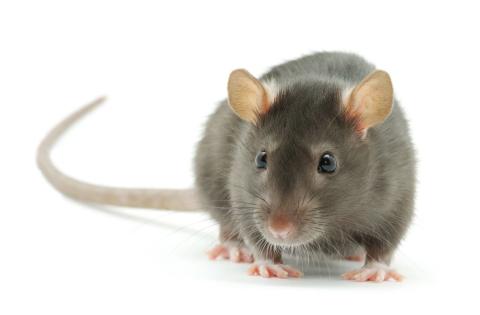Making Pest Control a Priority

Much has been discussed in terms of grocers enhancing their sanitation measures during the COVID-19 pandemic as customers demanded a safe shopping environment. Associates stepped up cleaning practices of frequently touched areas and throughout stores, while some food retailers used robotic solutions to automatically disinfect surfaces. In fact, many sanitation measures adopted during the height of the pandemic are still in practice today. However, while grocers have been preoccupied with preventing the spread of COVID-19, another big sanitary issue lurking in the corners may have gone overlooked: pests.
The Dangers of Bugging Out
Food retailers need to actively prevent pest infestation to avoid health hazards and reduce product loss, as well as protect their reputations.
From a health perspective, pests can transmit pathogens directly or indirectly. “Direct transmission can occur from blood-feeding insects such as mosquitoes, fleas or ticks,” explains Don Foster, ACE, technical manager at Memphis, Tenn.-based Terminix. “Mosquito populations can develop in stagnant/standing water inside of trash receptacles, potted plants, gutters or storm drains that may support breeding populations on the exterior. Fleas and ticks can be associated with feral dogs and cats, mice, rats, bats, or other wild animals, such as squirrels, raccoons and opossums, that can and do enter grocery stores.”
Foster says that indirect transmission comes from pests contaminating surfaces through physical contact. Flying insects such as flies can transmit pathogens when they land and simply walk on surfaces, or even defecate and/or regurgitate on these high-touch areas. The same goes for crawling insects like cockroaches, beetles and ants.
Insect fragments can also cause allergic reactions in customers shopping at a food retailer. “Both insect and rodent droppings can cause allergic reactions, as well as urine deposits from rodents that have not been properly sanitized,” cautions Foster. “Proteins in these deposits can cause asthma attacks or flu-like symptoms.”
From an economic perspective, John Bell, a board-certified entomologist and technical director for global pest control company Rentokil, says that stored product pests, such as some moths and beetles, can infest food products like grains, dry beans and flour products. “If left unchecked, these pests will continue to seek out additional food, and the amount of ruined product increases, causing economic losses,” Bell notes.
Additionally, a grocer’s brand may suffer, as pests of any kind — from rodents to fruit flies — can easily deflate a customer’s confidence in a food retailer.
“Small cockroaches, such as the German cockroach, reproduce quickly in the right conditions and can cause a social stigma that the store is unclean and deter shoppers, especially if those same cockroaches hitch rides to unknowing patrons’ homes in their grocery bags,” points out Bell.
Don’t forget: It takes one image of a cockroach crawling on store shelves posted to social media to go viral and cause irreparable damage to a food retailer’s image.
A More Proactive and Sustainable Plan of Attack
Incorporating integrated pest management (IPM) methods can be a more effective and environmentally sensitive approach to controlling pests.
The EPA describes IPM programs as using current, comprehensive information on the life cycles of pests and their interaction with the environment. This information, in combination with available pest control methods, is used to manage pest damage by the most economical means, and with the least possible hazard to people, property and the environment.
Rather than setting mouse traps to eliminate the critters that you can see – and simply hoping that they’ll come in contact with the devices – an IPM provider can go to the root of the problem of why/how they’re entering the store to prevent an infestation from occurring, getting out of control or being reported by a customer.
“IPM uses our knowledge of the pests’ habitats and characteristics to guide us in preventing pest populations before they become infestations through the use of various tools such as prevention, monitoring, and then addressing the issue while it is still small,” Bell explains.
Judy Black, VP of quality assurance and technical services at Atlanta-based Rollins Inc., agrees. “An IPM approach will help to identify introductions before they become infestations, thus making it easier to eliminate those pests,” Black says. “IPM also allows for the use of fewer pesticides, although this is contingent on a partnership between the grocer and the pest management provider.”
Because an IPM approach focuses on the root cause of a pest situation, a grocer may find that it needs to focus on employee practices, sanitation measures or exclusion methods.
.png?itok=tTb8PW90)
Best Practices in Avoiding Pesky Pests
As mentioned, one of the most effective tools for responsible grocery stores to implement is prevention — stopping the pest from entering the establishment in the first place.
“This can be done in various ways, including exclusion, sanitation and rotation practices,” Bell explains. “Exclusion simply applies barriers to known or suspected points of entry. These barriers that prevent pests from entering may include physical components like caulk, door sweeps or rubber seals. They also may include insect control products that can help repel or kill insects that try to enter. Sanitation is important to keep areas free of attractive food sources or areas that pests can call home. Keeping debris off floors and areas free of unnecessary debris are great examples.”
Foster outlines a few other preventive measures:
- Place eye-catching displays that draw your patrons at the front door away from the sensor that prevents the doors from closing to help prevent critters from sneaking in.
- Entry doors should be checked for timing (electronic), in addition to gaps at the top, along the sides and at the bottom. Air currents passing through these gaps, as well as visible light around these gaps, will attract pests.
- Window frames should be checked for gaps as well. Some locations may have a facade in which gaps around windows lead into the drop ceiling of structures.
- Trash receptacles can draw numerous pests, including feral cats. Use high-quality receptacles and place them well away from entry doors.
- Outdoor lighting should be evaluated. The type of lighting and brightness can either draw or repel flying insects. Lighting that produces excess heat will be more attractive to flying insects.
- Bug-attracting plants and garden supplies should be positioned away from entry doors.
- Candy displays shouldn’t be placed in lobbies close to entry doors, as they not only attract humans with a sweet tooth, but critters as well.
- Eliminate stagnant/standing water around entrances to prevent attracting disease-carrying mosquitos.
Also, in food preparation areas, keep dishes, cooking pans and utensils washed and dried when not in use.
For stored-product pests, Black stresses using the first-in/first-out process: verify stock rotation, and remove outdated products promptly.
“Many stored-product pest issues are caused by having product on the shelf for an excessive period of time,” she says. “Have a SPP [stored-product pest] monitoring program included in your IPM program. This is often an extra charge, but well worth it.”
Stored-product pests often leave behind eggs, larvae and pupae in and around food products. These pests often have widespread infestations with more than one source, which is one reason that they can be difficult to treat.
For stored-product pests, Foster recommends the following:
- Verify that gondolas have top caps to prevent product spillage and harborage.
- Reduce the use of pegboard as a backer in a gondola tower. Pegboard is often found on aisles containing baking goods, pet foods, rice and beans.
- Use packaging tape to cover seams between gondola decks and shelving to prevent spillage under decks.
- Remove fallen product behind and underneath gondolas, and remove kickplates during cleaning.
Items infested with stored product pests should be removed from the store immediately.
Another important tool in pest management is monitoring. Monitors are indicators that show potential pest problems and address them before they become a major issue.
According to Bell, special traps that use attractants are available to entice specific pests to help monitor an area.
“If they catch one of these pests, it will tell us what type of pest, the location and how severe the population is already, allowing us to immediately address the population before it becomes an infestation,” he says. “Addressing these pest populations when small helps reduce damage caused, control effort and footprint required.”
IPM includes ongoing monitoring and evaluation of treatment effectiveness, so that treatment strategies can be altered if pest activity changes.
“Once we identify a pest population, we need to eliminate it,” Bell continues. “This could be as simple as removing the infested product [or] the application of pest control products.”
“Overall, have a professional pest management provider who employs an integrated pest management approach to your facility,” Black stresses. “More specifically, train your team members to notice and report pest issues they see, so that your provider can address the issues as soon after introduction as possible.”
Future Fighting Tools
New technology is being developed on a regular basis to integrate into an IPM program.
“Some of these items allow the service professional to concentrate more on inspection than checking devices,” Foster says. “Using technology, pest activity can be captured and recorded through snapshots. These provide capture counts and, in some cases, species identification. This technology is seen with pheromone traps and insect light traps.”
“LED insect light traps have proven to be more effective, and more energy efficient and environmentally friendly, than their fluorescent counterparts,” Black adds. “There are both front-of-the-house and back-of-the-house options.”
According to Foster, the same type of technology has been developed with rodent-monitoring systems. “Some systems use Bluetooth technology, while other systems can provide instant capture notifications through cellular communication,” he notes. “Some systems identify the target through imagery and weight displacement before allowing the target access to rodenticide. These systems can alert the client as well as the service professional for real-time responses to help mitigate pest pressure.”
An essential aspect of IPM is educating retail staffers about the conditions that can harbor pests and how to recognize conditions that can be conducive to pest activity.
“Without cooperation, IPM does not work,” Black warns. “In fact, without cooperation, pest management does not work in any form."




